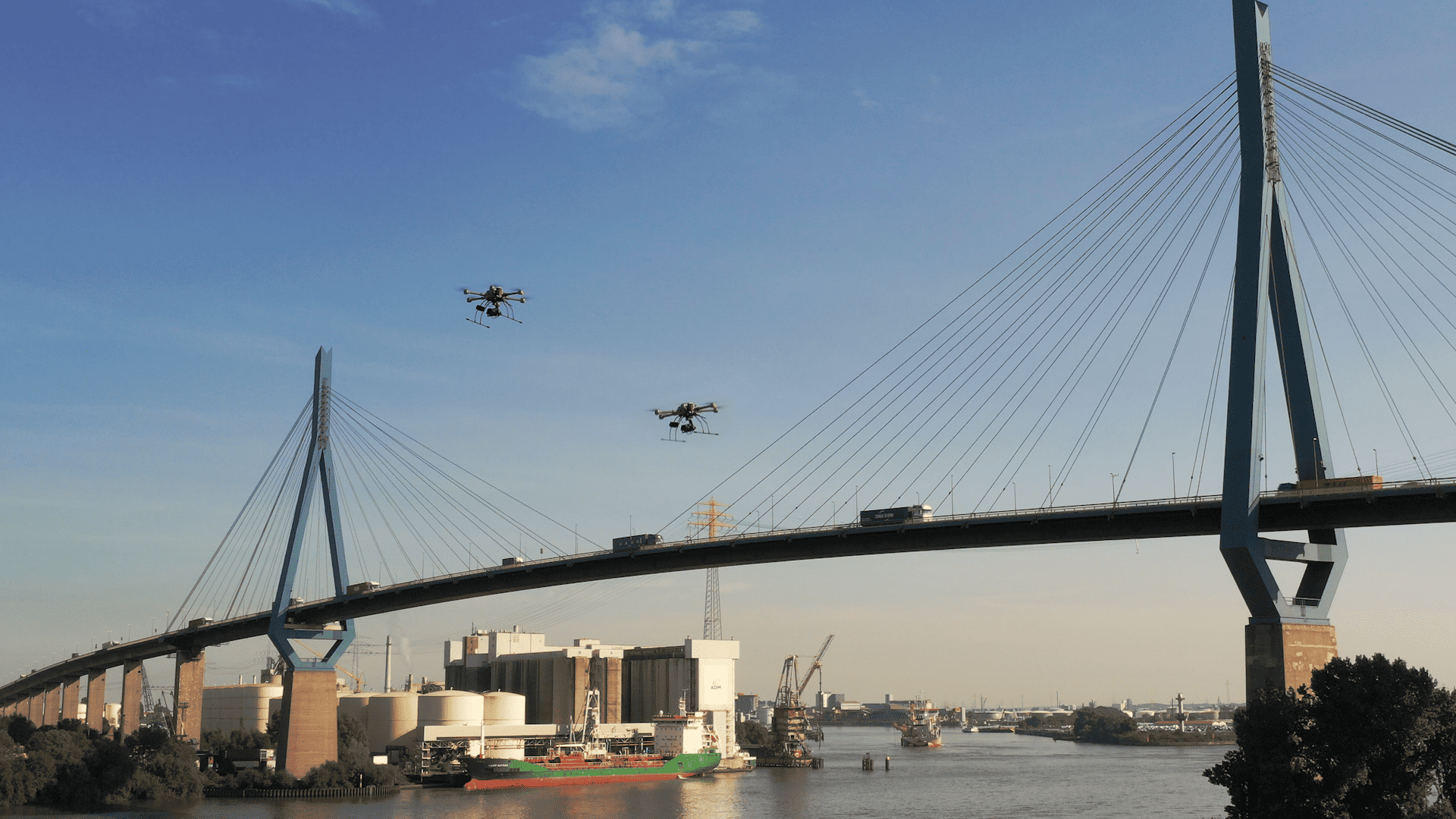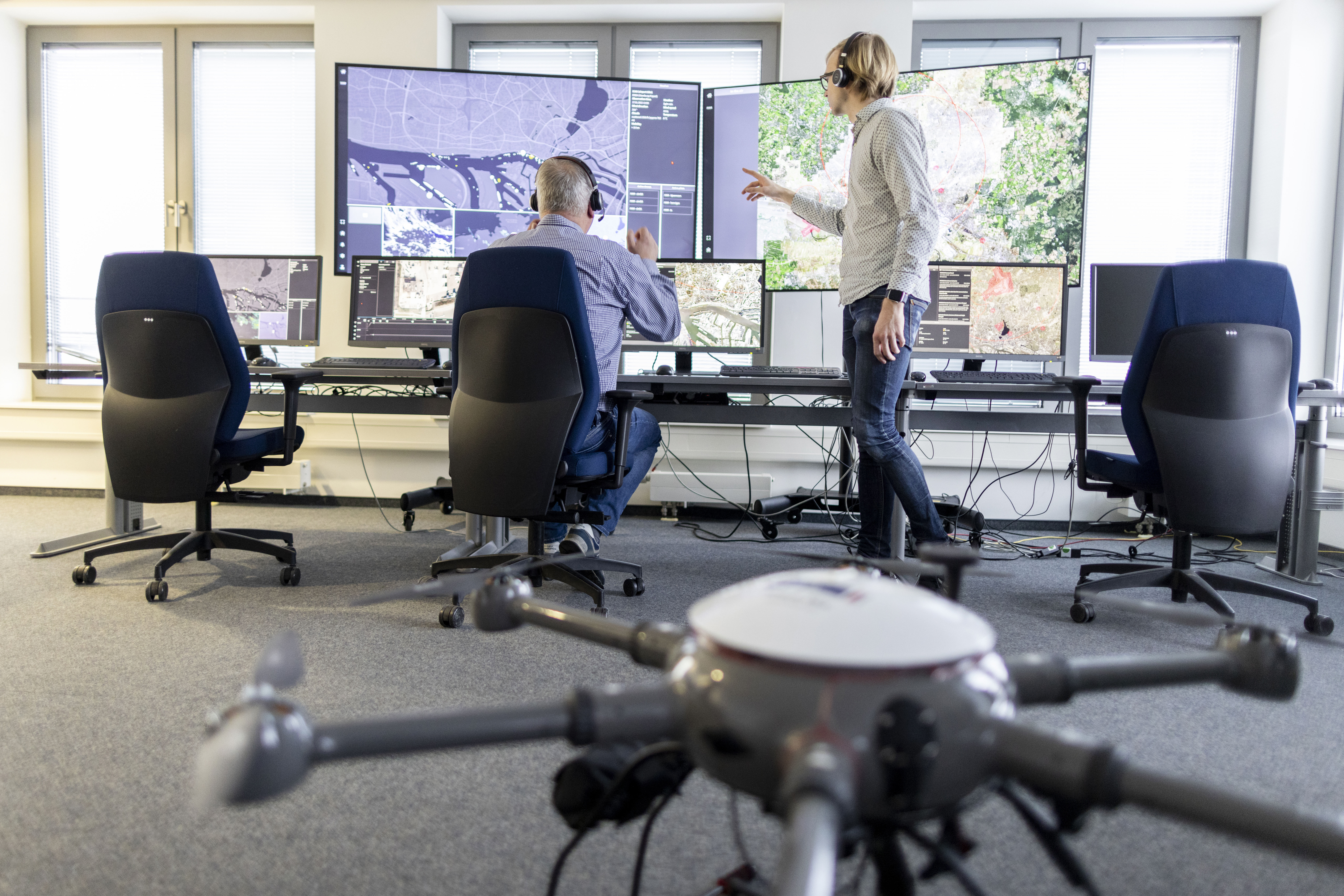
Urban Air Mobility is a promising solution to several social challenges. Think of transportation of medical equipment, first response support, or infrastructure inspection. Still, introducing drones into our daily lives isn’t as simple as it seems. In a series of articles, Innovation Origins is looking into these challenges. Today, we show what the city of Hamburg is trying to achieve in terms of traffic management.
The BLU-Space project is developing a system for managing unmanned drone traffic in Germany. It aims to integrate air traffic data with data from various sources and platforms for the first time under real conditions “to develop holistic blueprints”. The organization expects this step to significantly contribute to safe and economical air mobility. The Federal Ministry of Digital and Transport is funding the BLU-Space project with a total of 2.36 million euros as part of the mFUND innovation initiative.


Dr. Melanie Leonhard, Senator for Economics and Innovation, says the BLU-Space project brings together the key players in drone traffic management in Hamburg. “I am delighted about this development, which demonstrates that Hamburg continues to lead the way as a pioneer in aviation. Our city offers ideal conditions for the success of this project. The complex infrastructure of a densely populated urban environment, large port and industrial areas and inner-city airports is well-suited for solving challenges for the benefit of all of Germany.”
The benefits of Urban Air Mobility
The integration of drone technology in urban airspace has the potential to provide significant benefits for society and the economy: it reduces ground-based traffic and increases efficiency in logistics. The rapid delivery of equipment and targeted acquisition of information improves the ability to respond to emergencies, supports environmental protection through efficient data collection, increases security by monitoring critical infrastructure, promotes economic development and innovation in various industries, ensures data protection and airspace security, and strengthens civil protection and civil security.
The BLU-Space consortium brings together various municipal authorities and companies, business partners, and air traffic control. Together, they plan to create the first European test airspace for a complete drone traffic management system in Hamburg, known as a U-space airspace. The city offers optimal conditions to achieve this goal, dr. Leonhard claims. “Its complex infrastructure, which consists of densely populated urban areas, large port and industrial areas, and inner-city airports, is ideal for developing future-proof solutions for Germany.”

Scaling up
U-space airspaces are the digital foundation of a completely new form of mobility and a prerequisite for scaling the use of drones, which can fly automatically and beyond visual line of sight, remotely operated by pilots in a control center. To achieve this, the aircraft’s position will be shared between all relevant systems, which is ensured uniformly and securely in a U-space. One of the core objectives of BLU-Space, which will be completed by mid-2026, is to digitally integrate all relevant authorities, emergency service centers, and transport companies with the U-space.
The project will leverage the synergies of cooperation between various stakeholders within the project. “As a European model city for UAM (Urban Air Mobility), Hamburg offers an established, well-connected, multi-layered ecosystem. Highly competent and committed players from public authorities, administration and politics as well as industry and academia are jointly developing solutions for the safe, economical, publicly accepted and sustainable use of drones.”

